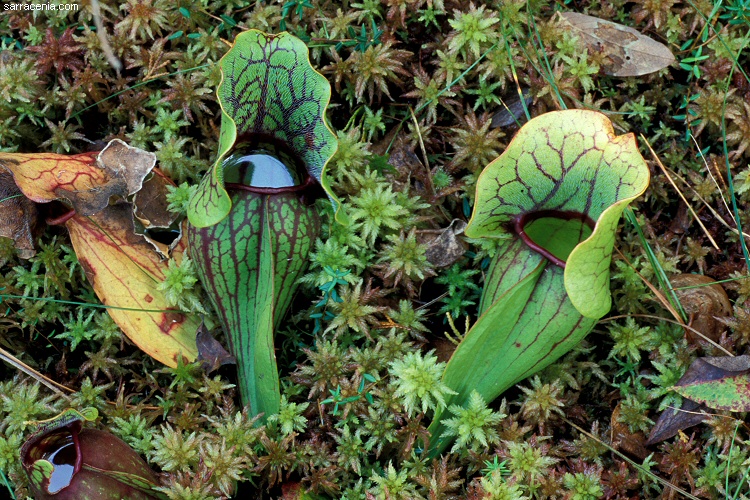
Moss and pitcher plants:
For your information, a Sphagnum mat such as this is very spongy. It is like a wet,
gushy trampoline. Sometimes you discover a weak spot in the mat structure and you plop through to your shins, thighs, or neck.
This damages the structure of the Sphagnum mat. Also, as you struggle to extricate yourself from your
watery grave, camera gear and electronics become soaked, car keys get lost, and shoes get sucked off!
This is all in addition to the threat of bunyips, of course.
You probably already know that these pitcher plants are
Sarracenia purpurea subsp. purpurea. I love seeing
them where the Sphagnum moss is nearly overgrowing the plants. In those situations, all you may see of the pitcher
plants are the vertical hoods sticking out of the moss. Strangely, the view reminds me of the floats of Portuguese man-o-wars or
by-the-wind-sailors1 on the surface of the ocean. Anyway, in these bogs, when you look
closer at the vertical hoods you will see the pitfalls open and ready for prey. It is a perfect little trap for bugs crawling on
the surface of the Sphagnum. In such cases, I think the hood has the dual role of preventing the moss from growing over
and into
the pitfall opening, and for photosynthesis since it is the only part of the plant that actually gets sunlight.
I love going into bogs. It is so relaxing, meditative, and relaxing. I am alway rested, peaceful, and rejuvenated
afterwards.
1Common names referring to colonial gelatinous pelagic organisms with vertical hoodlike structures that stick out
of the ocean to catch wind.